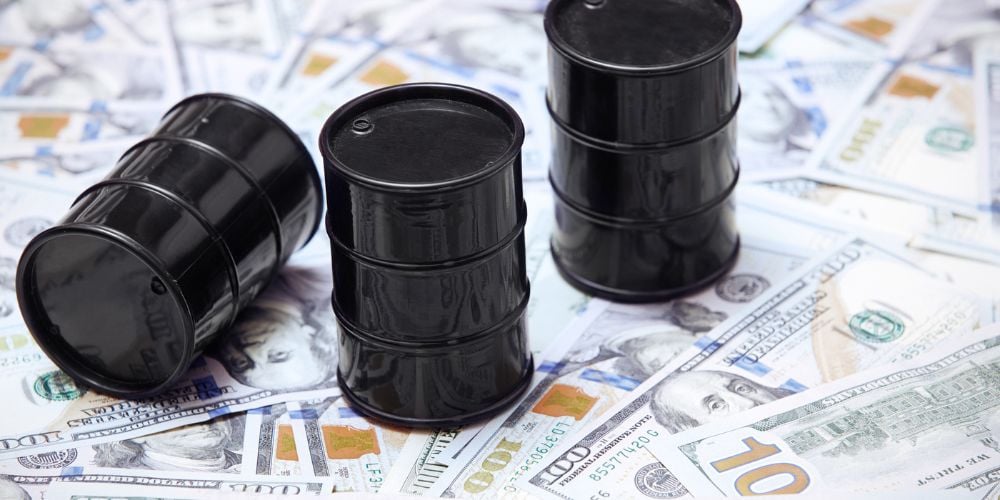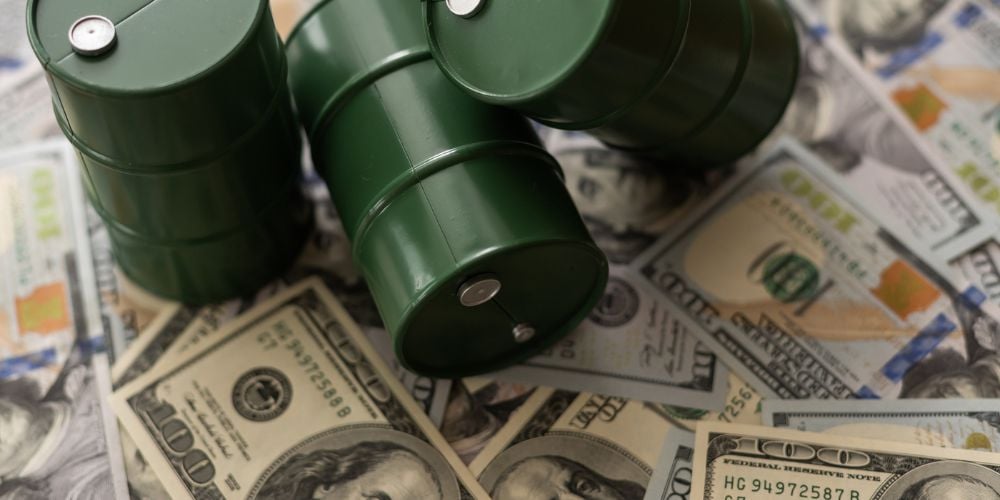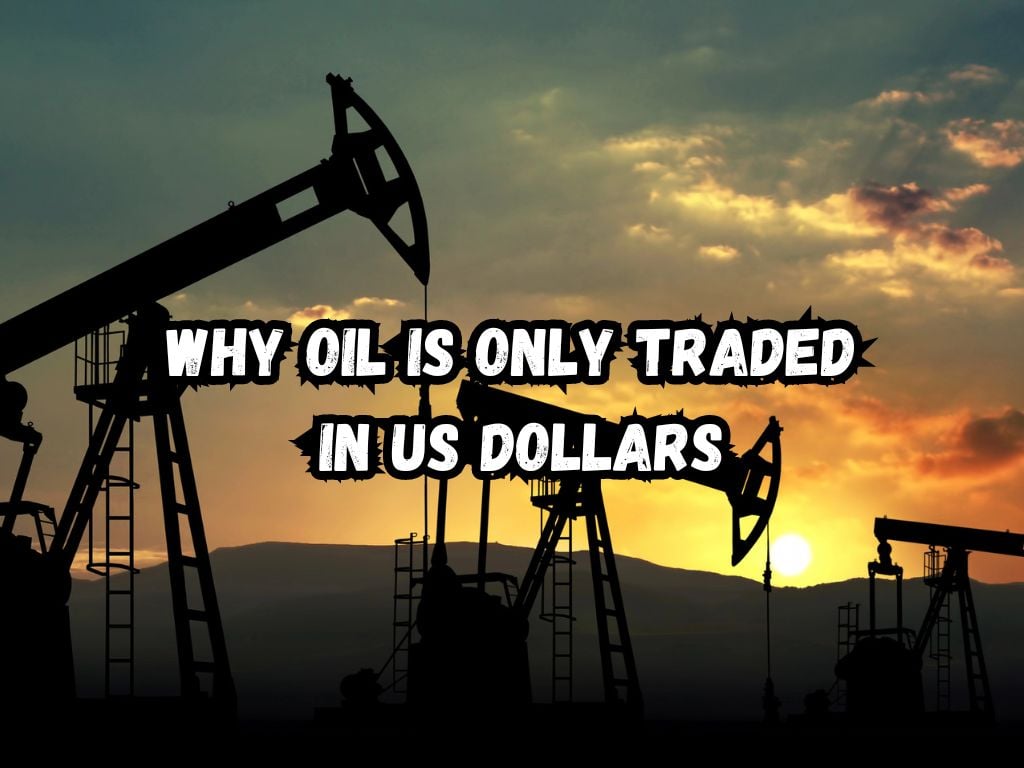The global economy turns on the axis of several key commodities, with oil at the forefront. This black gold not only powers countries but also dictates the economic stability of regions.
Central to its trade is the currency in which it is bought and sold – the US dollar. Understanding why oil is only traded in US dollars requires a journey through history, economic policies, and global agreements that have shaped today’s financial landscape.
Why Oil Is Only Traded In US Dollars?
Historical Context
The story begins with the Bretton Woods Agreement in 1944, a pivotal moment that marked the US dollar’s ascension as the world’s reserve currency. This conference established a fixed exchange rate system anchored by the dollar, which was tied to gold.
Over time, though, this system collapsed, mainly due to the inability to maintain the gold standard. The petrodollar system’s inception in the 1970s further cemented the dollar’s dominance.
Through agreements between the United States and leading oil-exporting countries, specifically Saudi Arabia, oil began its trade journey in US dollars.
The system expanded with the Organization of the Petroleum Exporting Countries (OPEC) pricing oil in dollars, thereby globalizing the currency’s use.

Political and Economic Factors
The US’s economic might is a leading factor in the dollar’s dominance. As the largest economy globally, the US provides a stable and reliable backdrop for the international currency.
This reality, coupled with the country’s strategic efforts to maintain this status quo through foreign policy and defense, underscores the dollar’s strength in oil trade.
Oil market dynamics offer another layer of insight. Trading oil in a single currency, like the US dollar, simplifies transactions and minimizes risk. It offers liquidity and fosters a sense of security for both buyers and sellers in the volatile energy market.
Benefits of Trading Oil in US Dollars
The benefits are manifold and extend across exporting nations to include the United States itself.
For exporting countries, dealing in a universal currency translates to ease and safety in financial transactions. It streamlines currency management and mitigates exchange rate risks.
For the United States, commanding the currency of oil trade affords significant advantages. It bolsters the country’s control over international oil markets and helps balance its payments.
Essentially, it can borrow at lower costs and manage national debt more effectively. The global trade system also benefits from this arrangement. It simplifies and stabilizes transactions, making international trade more predictable and reducing costs associated with currency exchange.
Challenges and Criticisms
However, the monopoly of the US dollar in oil trade does not come without its challenges. Some critique the undue power it grants the US in international financial systems.
Calls for a diversification of currency use in oil trade have grown louder, with countries like China and Russia leading the charge towards employing their currencies for this purpose.
The Future of Oil Trading
Diving into the future, technology and cryptocurrencies could redefine how oil is traded. Blockchain technology offers a transparent, secure way to conduct transactions.
The adoption of these technologies, however, faces hurdles, including regulatory and security concerns. Simultaneously, shifts towards multi-currency systems have been observed.
Moves by nations to sidestep the dollar in oil transactions hint at a future where a more diversified currency approach in oil trade could become normative. This trend bears watching, as it could significantly reshape global economic dynamics.

Frequently Asked Questions
What are petrodollars and how do they influence global economics?
Petrodollars are US dollars paid to oil-exporting countries for their oil. This influx of dollars into the countries’ economies and their subsequent investment in US assets significantly impacts global economic patterns, especially in the balance of payments and investment flows.
Why do countries like China and Russia want to move away from the US dollar for oil trading?
Diversifying away from the dollar can offer countries more control over their economic policies, reduce their vulnerability to dollar fluctuations, and challenge the US’s economic dominance.
How has the US dollar’s dominance impacted the global economy, specifically in developing countries?
The dollar’s dominance can lead to vulnerabilities in developing countries, especially those related to exchange rate fluctuations and dependency on US monetary policy, which may not align with their economic interests.
Is it possible for the euro or another currency to replace the US dollar in oil trading, and what would be the implications?
While theoretically possible, replacing the dollar would require significant shifts in global economic power and agreements. The implications would be widespread, affecting global trade flows, exchange rates, and economic stability.
How do fluctuations in the value of the US dollar affect oil prices globally?
Since oil is priced in dollars, a weaker dollar makes oil cheaper in other currencies, potentially increasing demand. Conversely, a stronger dollar can lower global oil demand as prices rise in local currency terms. This relationship highlights the interconnectivity of currency and commodity markets.
Conclusion
The trade of oil in US dollars is a complex interplay of historical events, economic dominance, and strategic benefits that have entrenched the dollar’s position in the global economy.
While the arrangement offers broad benefits, it also presents challenges and faces potential shifts in the future. How the world navigates these dynamics will be pivotal in shaping the future of global economic stability and geopolitical relations.
Understanding the nuances of why oil is traded in USD is more than a foray into economic policies; it’s a glimpse into the underworkings of global power structures.
As we look to the future, the potential for change in these dynamics poses intriguing possibilities for the global economy.


 Tags:
Tags:










